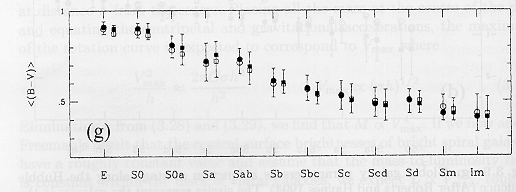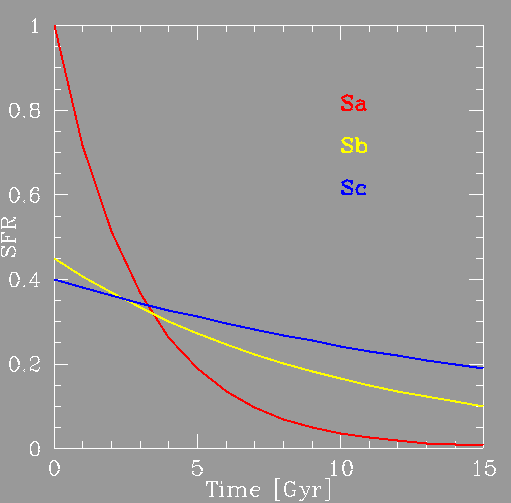
Typically this is explained
by different star formation histories.

We can use these integrated colors to tell us
about
the
history of galaxies. For example, The colors and gas contents of
spirals
show trends along the Hubble sequence: Sa galaxies are redder, and have
a relatively low gas:star ratio. Sc galaxies are bluer, and have a high
gas:star ratio.
|
Typically this is explained
by different star formation histories.
|
 |
We can also measure the global star formation rate in disk galaxies by using:
Question: What determines the star forming
properties
and history of different spiral galaxies?